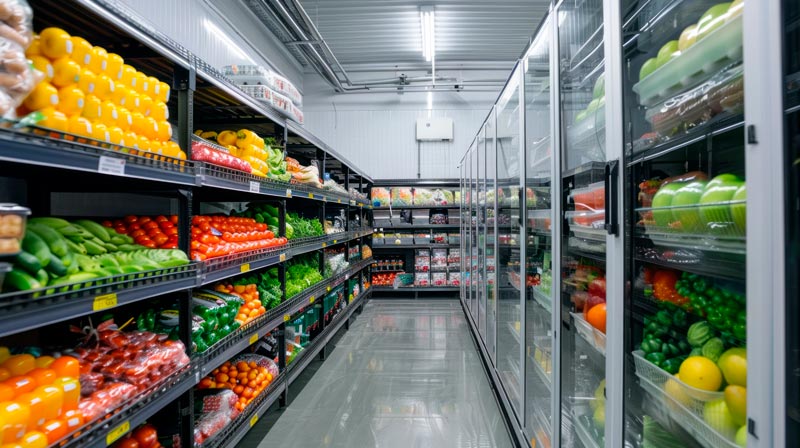Handling seasonal and perishable freight during the summer presents unique challenges for logistics and supply chain professionals. The increased heat and fluctuating temperatures can compromise the quality and safety of temperature-sensitive goods. Ensuring the integrity of perishable shipments during this season is critical to maintaining product quality and customer satisfaction.
This blog will delve into the complexities of managing these types of cargo during summer and discuss tailored solutions to ensure the integrity and timely delivery of perishable shipments. We will explore the challenges that arise, such as the impact of temperature fluctuations, the necessity of tight delivery windows, and the complications caused by variable demand.
Specific Challenges in Handling Seasonal and Perishable Cargo
Summer brings volatility and sensitivity to seasonal and perishable items. The primary challenges include:
- Temperature Fluctuations: The intense heat of summer can cause significant temperature variations, which can severely risk the spoilage and degradation of perishable goods. Perishable items like fresh produce, dairy products, and pharmaceuticals are particularly vulnerable to these temperature swings. Maintaining a consistent and optimal temperature throughout the transportation and storage process is critical to preserving their quality and safety.
- Tight Delivery Windows: During the summer, the urgency for quick and efficient delivery becomes even more critical. Perishable goods have a limited shelf life, and delays in transportation can result in a decline in freshness and quality. Logistics professionals must optimize their delivery schedules and routes to minimize transit times and ensure that products reach their destinations in peak condition.

- Variable Demand: The summer season often sees spikes in demand for certain perishable items, adding pressure to the supply chain. For example, there is typically an increased demand for fresh fruits, ice cream, and beverages during hot weather. This surge in demand can strain inventory management and logistics operations, requiring companies to adapt quickly to changing market needs.

These challenges impact supply chain efficiency and product quality, making adopting specialized cold chain solutions essential. Cold chain logistics involves a series of temperature-controlled environments, from production and storage to transportation and distribution. Implementing advanced refrigeration technologies, temperature monitoring systems, and insulated packaging can help mitigate the risks associated with temperature fluctuations. Additionally, leveraging data analytics and real-time tracking can enhance visibility and control over the entire supply chain, enabling proactive measures to address potential issues.
Addressing these challenges with innovative solutions and strategic planning, logistics, and supply chain professionals can ensure the safe and timely delivery of seasonal and perishable cargo during the summer season’s peak demands and beyond.
Best Practices for Freight Forwarders
Freight forwarders can optimize their cold chain operations by following these best practices:
- Continuous Monitoring: Implementing real-time data monitoring systems is crucial for maintaining the integrity of perishable goods throughout the supply chain. Our temperature and data loggers track temperature, humidity, and other environmental conditions in real-time, providing immediate alerts if deviations from the optimal range occur. Continuous monitoring helps prevent spoilage and degradation and enhances traceability and compliance with regulatory standards.

- Collaboration with Partners: Working closely with suppliers, transporters, and customers can enhance efficiency and sustainability. Sharing data and insights can lead to more coordinated and effective cold chain management. For instance, collaborating with us can help you optimize inventory levels and reduce waste while working with transporters can improve route planning and delivery schedules.
By following these best practices, freight forwarders can optimize their cold chain operations, ensuring the safe and efficient delivery of temperature-sensitive goods. Continuous monitoring, collaboration with partners, advanced packaging solutions, efficient route planning, and sustainability initiatives all contribute to a robust and reliable cold chain, ultimately enhancing the overall performance and resilience of the supply chain all year round.








